Concertino, Op. 4
Op. 4
-
Ships in 1 to 2 weeks
Details
Description
SKU: CF.W1853
Op. 4. Composed by Ferdinand David. Arranged by Robert Mueller. Piano-SWS. Classical. Set of performance parts. With Standard notation. Opus 4. 26 pages. Carl Fischer Music #W1853. Published by Carl Fischer Music (CF.W1853).ISBN 9780825806292. UPC: 798408006297. 9x12 inches. Key: Eb major.
Ferdinand David The contest and recital favorite is newly engraved, edited from the original edition with extensive notes by Justin Tokke. The editor calls David's Concertino "..a prime example of mid-nineteenth century romanticism in Germany. Heroic rhythmic gestures combined with beautiful lyrical sections..".
The story of the Concertino begins with Felix Mendelssohn,the world-renowned composer and conductor of theGewandhaus Orchestra of Leipzig in the 1830s and 40s.He was friends with Karl Traugott Queisser, a preeminenttrombone soloist and a member of the GewandhausOrchestra playing viola. Queisser appeared many timesas a soloist with the orchestra often performing concertostranscribed for trombone solo and orchestra. Mendelssohnwas greatly impressed by Queisser’s playing and initiallypromised to write a concerto for the orchestra and Queisseras a trombone soloist. Given Mendelssohn’s busy scheduleand recent marriage, however, it never came to fruition,so Mendelssohn enlisted the help of (the then-young)Ferdinand David, the Gewandhaus concertmaster. David,a virtuoso violinist, had collaborated many times withMendelssohn over their careers, most notably in 1844 whenDavid was the premiere soloist of Mendelssohn’s ViolinConcerto in E Major, his last major work. While not asprolific as Mendelssohn, David was a proficient composerin his own right and composed the Concertino in 1837 forQueisser. It premiered with great success and is arguablyDavid’s most famous work.The Concertino is structured in three continuous movements.The middle “funeral march” movement is flanked by twoallegro sections based on the same thematic material. It isa prime example of mid-nineteenth century romanticismin Germany. Heroic rhythmic gestures combined withbeautiful lyrical sections come together in this work to allowthe soloist to display a large expressive range without greattechnical demands. As a result, the Concertino has enjoyedgreat popularity with high school and college trombonistsin America and abroad for generations. Combined withother pieces at the same level, such as Guilmant’s MorceauSymphonique, and Rimsky-Korsakov’s Concerto, this piececan act as a solid foundation to trombone pedagogy andrecitals alike.After beginning with a beautiful chorale-like introduction,the piano (or orchestra) builds up to a fiery entrance of thetrombone at letter A. The trombone plays its heroic themein the first section. Attention should be paid to the preciserhythm and execution of each note. A lyrical section, notfar removed from the operatic arias of the day, starts atletter C. The soloist should play in a tender, affectionatemanner. A short scherzo-like section follows in a dramaticcontrast. Clarity is the key here, without overly humorousaffect.The trills at mm. 124 and 125 can sometimes present achallenge for student trombonists. For each, the trombonistshould start the note clearly in tune and slowly speed upthe trill until at full speed about a beat and a half later.This is a common expressive technique and can help withkeeping the embouchure under control. It is recommendedto lip-trill the F in sharp-fourth position with the G above,and then trill the F≥ in slightly sharp-third position witha very sharp G above. While the trill is slower, the slidecan be adjusted for each note, but once it is at full speed,the intonation of the lower note takes precedence. In nocircumstances should the trill be executed by using twoadjacent positions without a lip-trill, nor is it acceptable tosubstitute a trigger trill, should your instrument have one.After an interlude by the piano, a recitative leads into thesecond movement. The funeral march is solemn but notbrooding. The trombone should play its stately themewith dignity and restraint. As the movement progresses,the expression through the phrases should escalate,culminating in climaxes on the high Cs at mm. 194 and227. Care should be taken on the intonation of the pedalG in m. 218. Also, the concluding phrase at m. 228 andbeyond requires a lot of air and will require some carefulpreparation.The final movement is quite similar to the first, with evenmore heroic sections. Measure 339 has the tromboneplay the theme with great force. This should be the mostfull-bodied tone possible, quite loud, without buzzingovertones. It is the culmination of the hero’s travels andshould be played in a bold or even epic manner.This newly re-engraved edition by Carl Fischer is based onthe original edition and incorporates various correctionsthroughout. Wherever possible, articulations have beenmade consistent across occurrences throughout the piece.A notable example is the first entrance of the trombone:The staccato arpeggio with an accent on the first tripletwas not consistently applied throughout, and this has beencorrected. Various wrong accidentals have been fixed,and older rhythmic conventions (such as using a dottednote over the middle of the measure) have been updatedto the modern standard. Also, alternate positions for thetrombone are suggested where appropriate. Importantly,measure numbers have been added throughout (withcontinuous numbering), and the rehearsal marks from theoriginal orchestral score have been maintained.The Concertino is, without a doubt, a major cornerstonework in any trombonist’s repertoire. I hope you gain greatuse and enjoyment out of this edition.
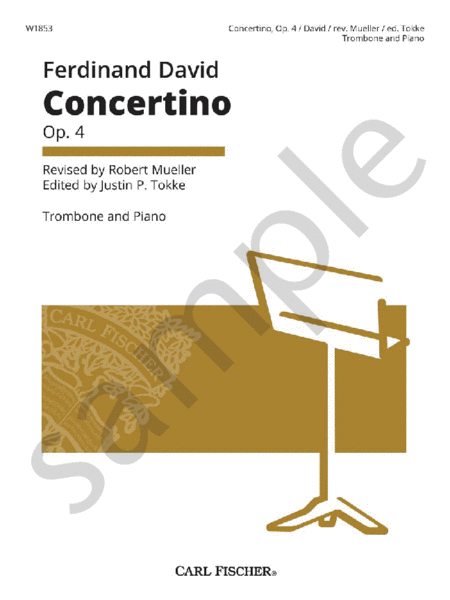
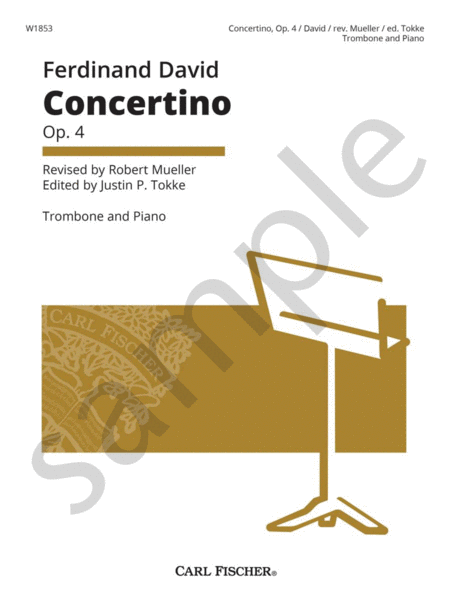
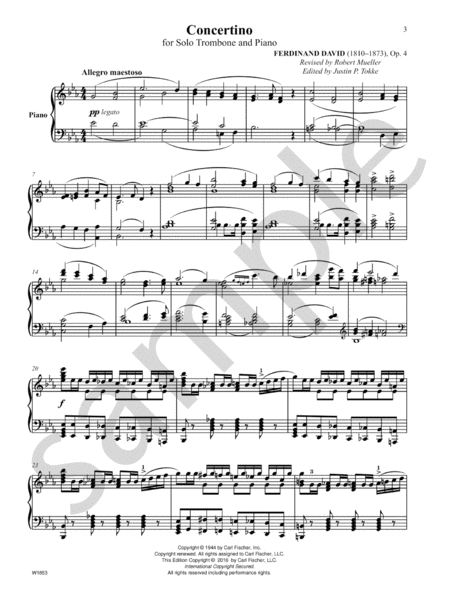
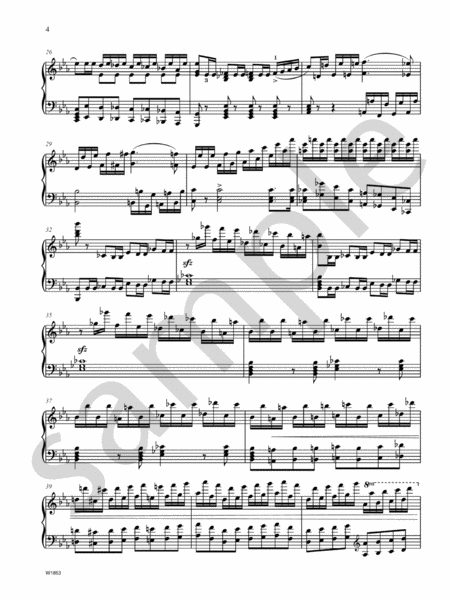
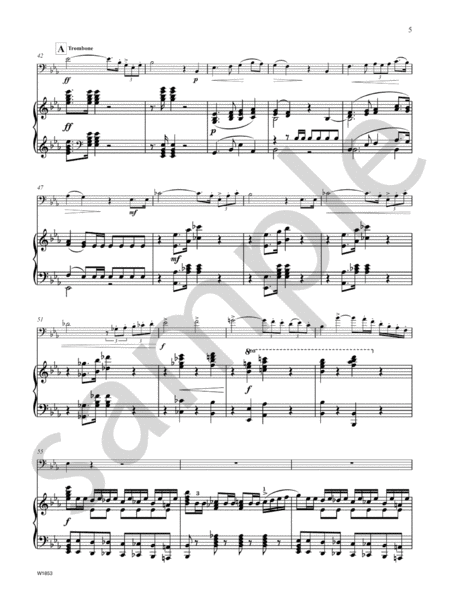
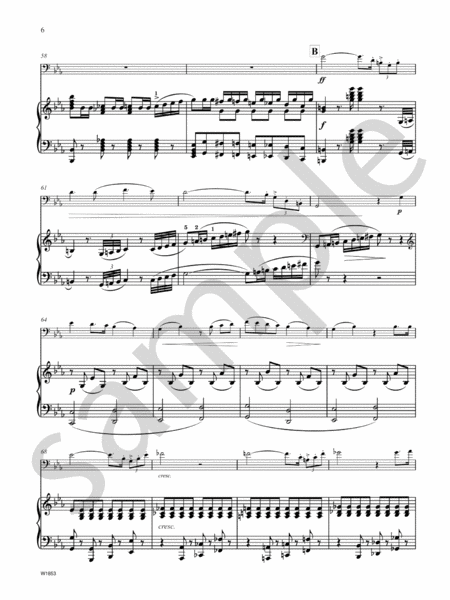
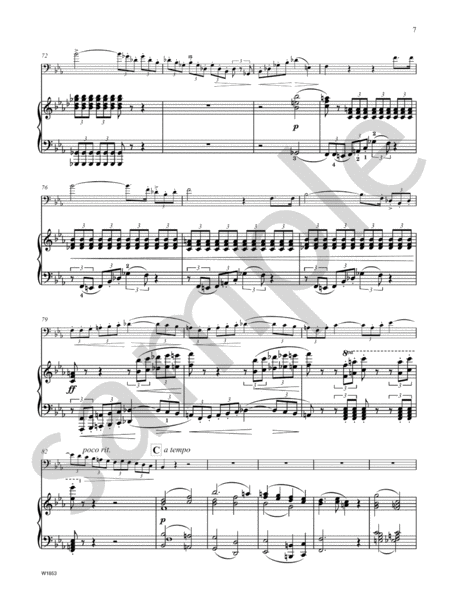
 Share
Share